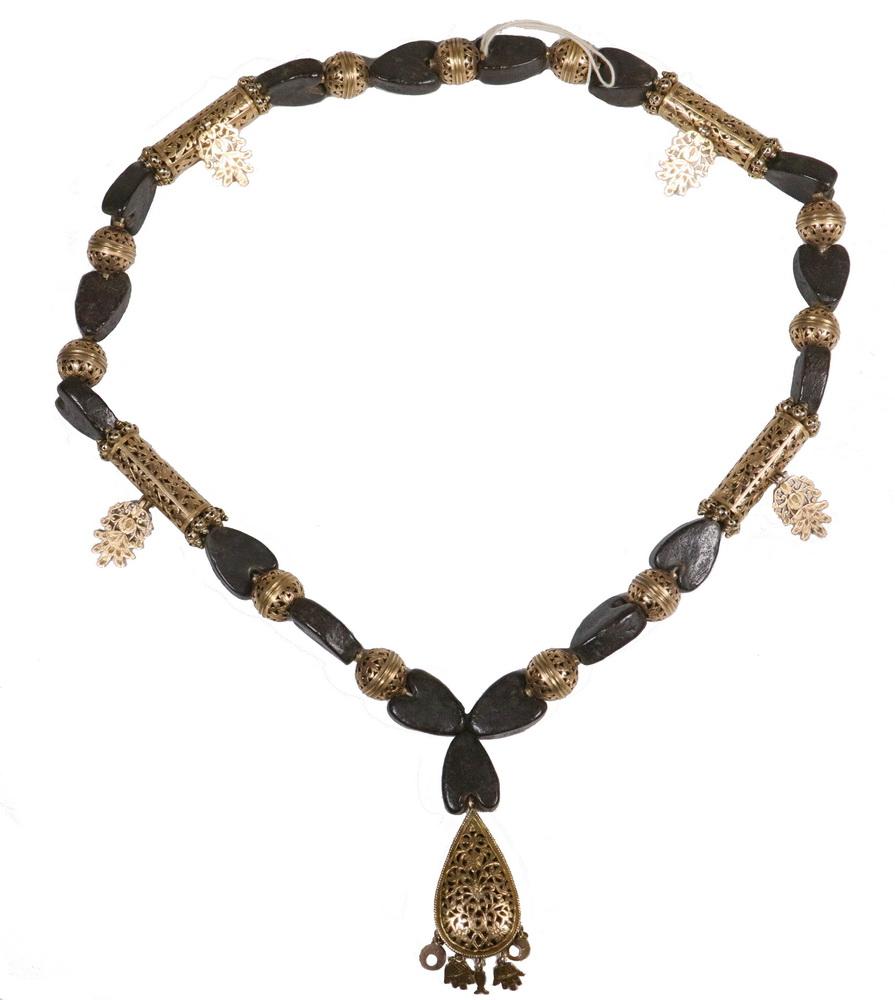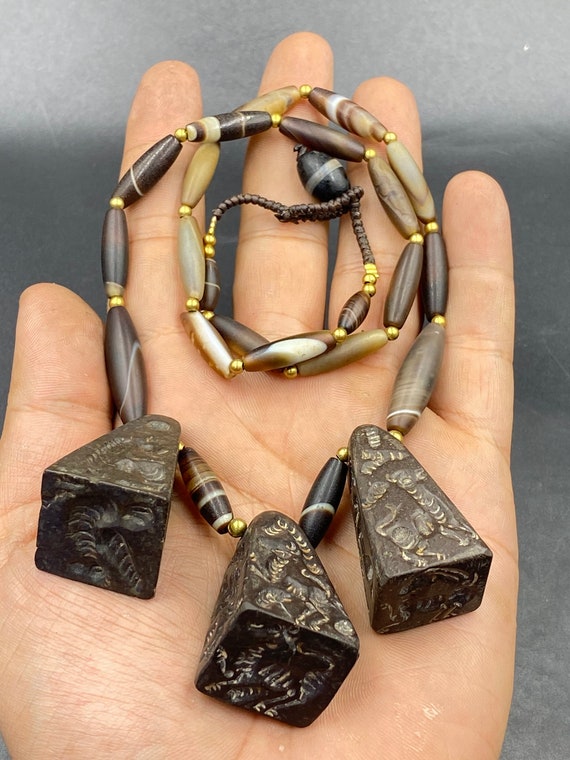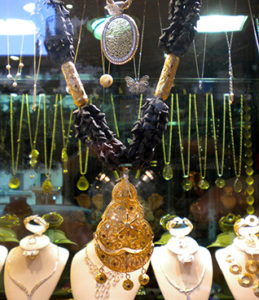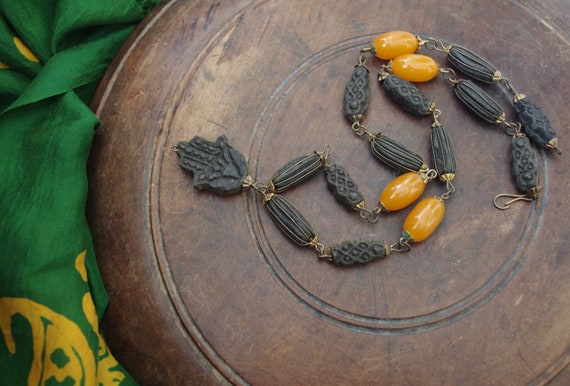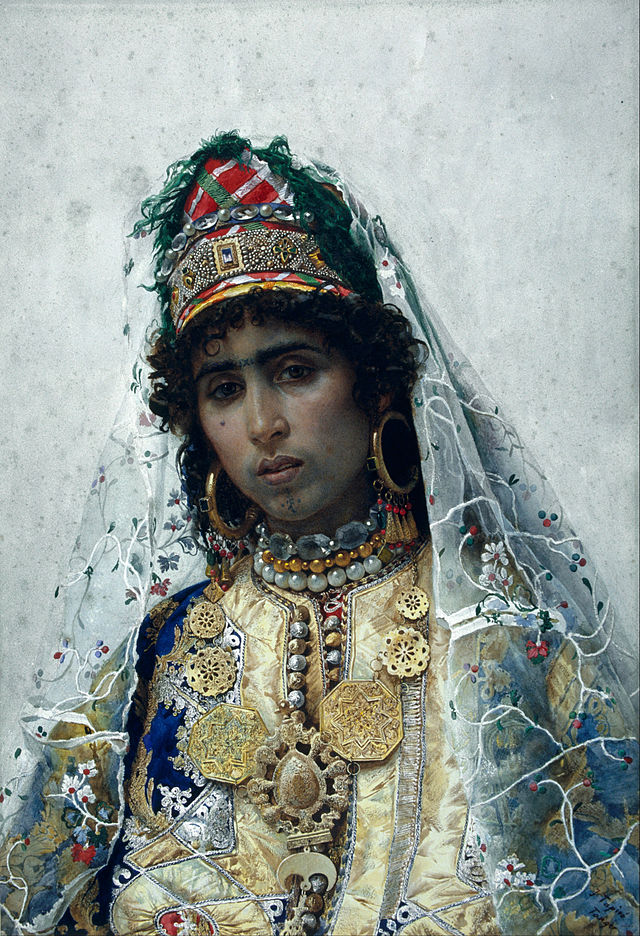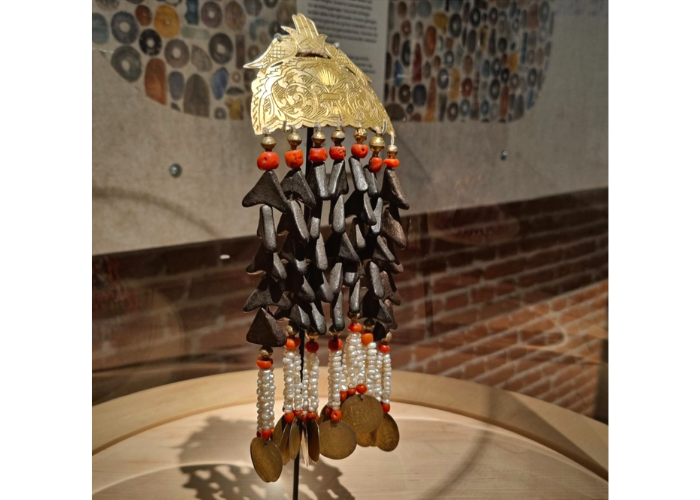Scent is one of the most powerful aspects of personal adornment. It lingers in the air long after a person has left, it brings back memories of places we’ve been or people we’ve loved, and it has a proven influence on our state of mind: from soothing lavender to pick-me-up rosemary, the powers of fragrance have been known and used for millennia. The use of fragrance goes well beyond that of beautification.
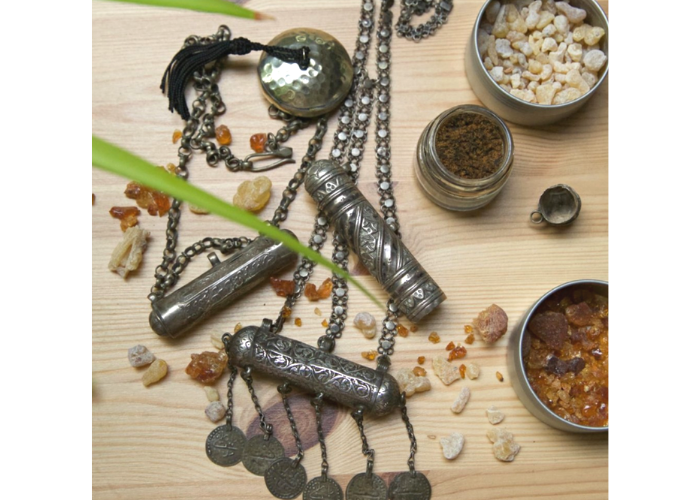
Silver amulet containers. Fragrance is often used in formal, but also in informal ritual context.
Image: Sigrid van Roode
The journey of life
Fragrance is an incredibly powerful agent of transformation. The use of perfume in and of itself marks the difference between a married woman and an unmarried girl, as it is closely related to the intimacy of married life: fragrance is an important part of sensuality between husband and wife. But there is much more to fragrance, in particular as it relates to weddings.
The lavish use of scent during wedding festivities is not just a form of beautification, but actively guides the bride through her transition into married life. A bride is seen as a particularly vulnerable being, as she is on the threshold between two stages of life: she is not yet a wife, but no longer an unmarried girl. The application of fragrance as part of the bridal preparations serves not only to help her transition into the next phase of her life, but also to protect her: following the lines of analogous magic, evil beings that may wish to harm her are deterred by pleasant scents. Fragrance isn’t only important in weddings, it also plays a role in other transformative periods of life, such as when giving birth and even upon death.
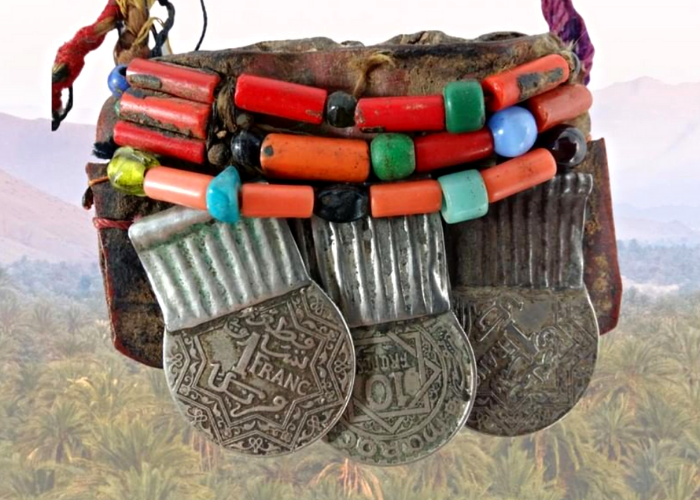
Patches of scented paste are still visible on this hair ornament from Morocco.
Fragrant jewellery
All of these capacities – the spiritual, the social, and the transformational – are present in fragrant jewellery as well. Jewellery can be created specifically to hold fragrant substances, or can actually be made out of olfactory materials. An example of jewellery designed to hold fragrance are the small containers for ambergris and musk that are worn throughout North Africa and Southwest Asia. Named for the substances held in them, they are called ‘anbra or meskiyya – revealing whether they held ambergris or musk. These containers are little masterpieces in silver or gold, which shows the esteem in which these scents were held.
Types of jewellery created from fragrant materials themselves include the clove necklaces worn in Palestine on the occasion of a wedding. The cloves are soaked in water to make them softer and easier to puncture and thread. This water is then used to bathe the bride on her wedding day, while the necklaces are worn by her female relatives and friends. In some regions, these are paid for by the father of the bride to express his appreciation for these relationships. The scent of cloves beautifully connects all of these sentiments: the bride is protected by this metaphor of friendship and kinship, which is carried into the next stage of her life.
A meaningful ensemble
The transformative and protective nature of fragrance is not only put to use in jewellery, but features in all aspects of personal appearance. Fragrant components were also sewn into clothing, or added to the henna paste which was used to create patterns on the skin. Fragrance functions as one component of a carefully curated ensemble alongside colour, material and pattern, each carrying meaning and chosen with care. All elements of personal appearance such as dress, embroidery, make-up and beauty, hairstyle and jewellery make conscious use of these. A colour is never chosen randomly, and neither is fragrance.
In personal adornment however, smell is also the capacity that is the first to be lost. Jewellery and pieces of clothing do not keep their fragrance forever, and so our memory of the importance of scent slowly fades as well. Especially when items of dress and adornment have travelled far from home, this olfactory capacity is easily overlooked. The coating of fragrant paste on the inside of bracelets for example, or remaining patches of scented hair paste on pins or ornaments, are mistaken for dirt and cleaned off to make the piece more aesthetically pleasing. But in doing so, we remove the tangible remnants of an invisible power of the piece: the fragrance that would have surrounded the wearer, protected her, and connected her to generations of family history.
Because foul odors were thought to breed disease, creating a pleasant-smelling atmosphere wasn't frivolous, it was imperative.
Since prehistoric times, when shells, stones and bones were used as personal decoration, jewelry has been more than just a mark of status or rank. It was also worn as protection from the dangers of life. Pleasant scents held a more mythical significance than they do today. In many ancient cultures it was believed that burning incense was a way to connect directly with the gods. So the earliest aromatic jewelry would have packed a double punch: it was an amulet to please the gods AND protect the wearer.
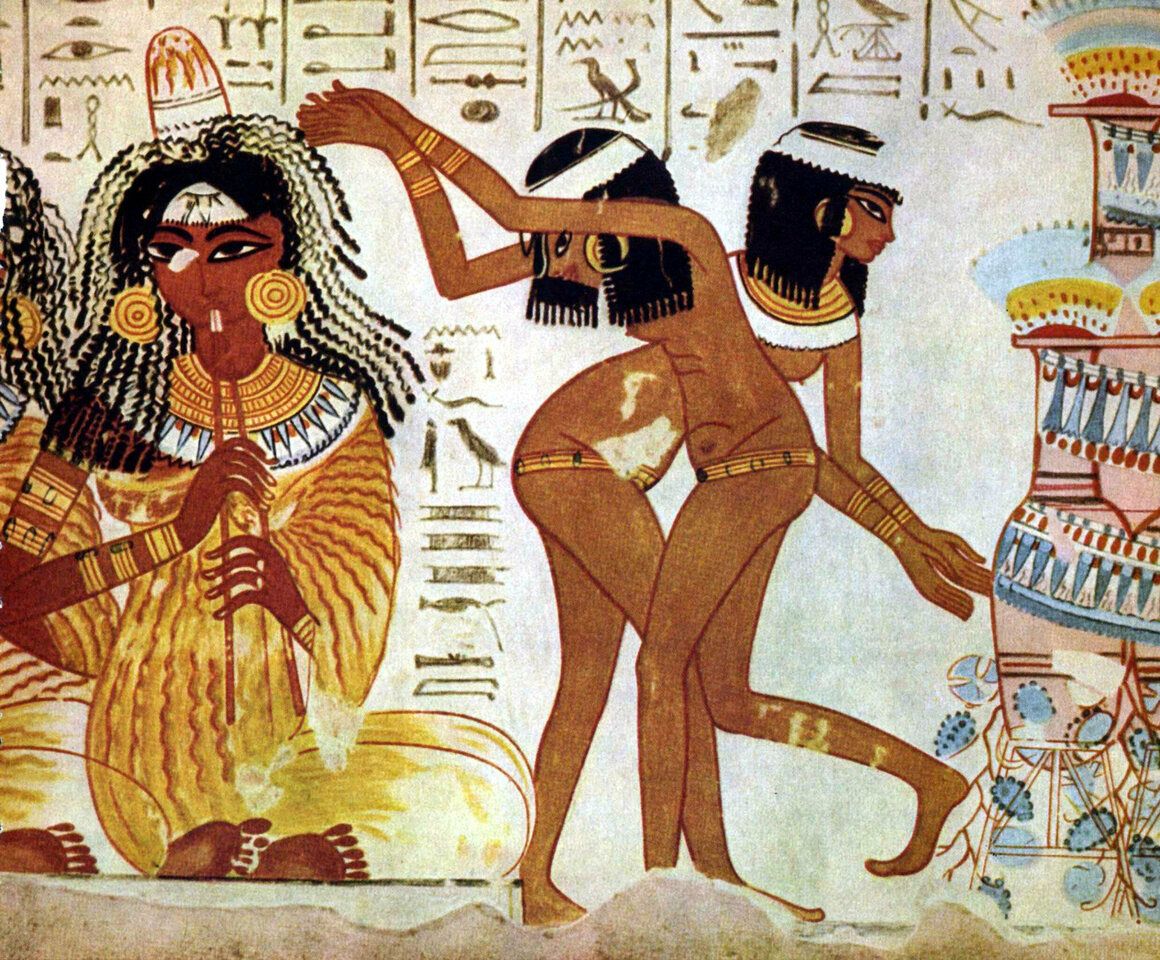
In ancient Egypt, people wore scents in unguent cones, which were like wax hats that dripped oil into one’s hair over the course of the day.
Ancient Egyptian wax scented head cones.
The ancient world was scent-obsessed. Bonfires of aromatic woods and flowers lit the streets of Athens. Perfume-drenched doves were released at parties to flutter over guests. In Roman storerooms, burning incense did double duty: perfuming the goods and repelling rodents. In ancient Egypt, Hebrew wives threw mint on their hard dirt floors.
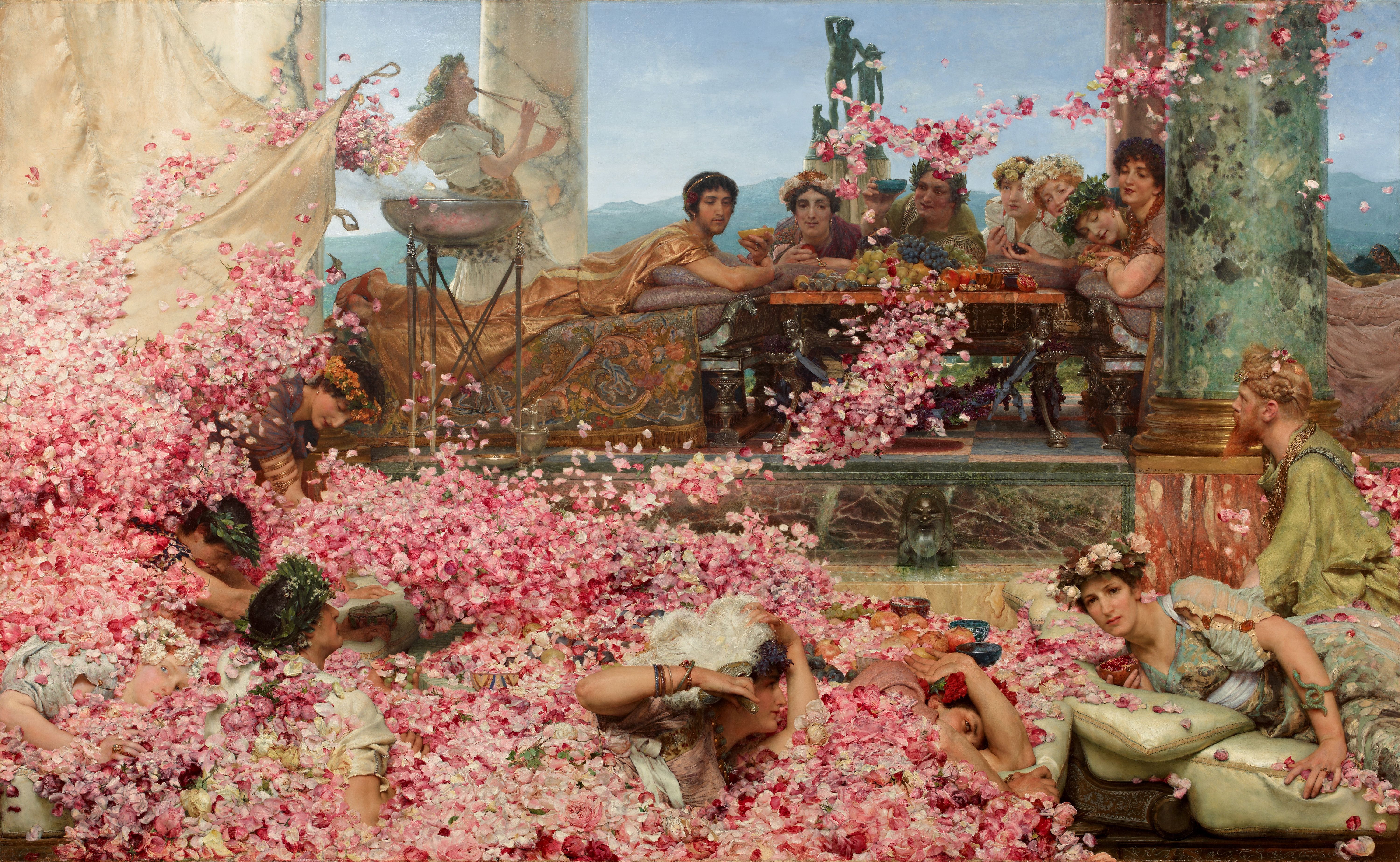
An evocative depiction of the decadence of scent in the Roman era. "Rose of Heliogabalus" by Lawrence Alma-Tadema, 1888.
The first known aromatic jewelry were the necklaces of Ancient Egypt fashioned from beads of skhab - made from an ancient recipe for a scented paste made from ambergris, rose water, saffron, cloves, musk and nutmeg. They are said to retain their scent for years. The necklace is still worn today in parts of the world, and there are strict rules surrounding their wear, since they are known to be such a powerful aphrodisiac. They are worn only by married women, and only when they are with their husband. If the husband is away, the necklace has be kept in a chest. Unmarried women are not even permitted to touch it.

Skhab necklace Ambergris mixed with spices, metal, plastic 20th century Tunisia, Africa, Brooklyn Children's Museum
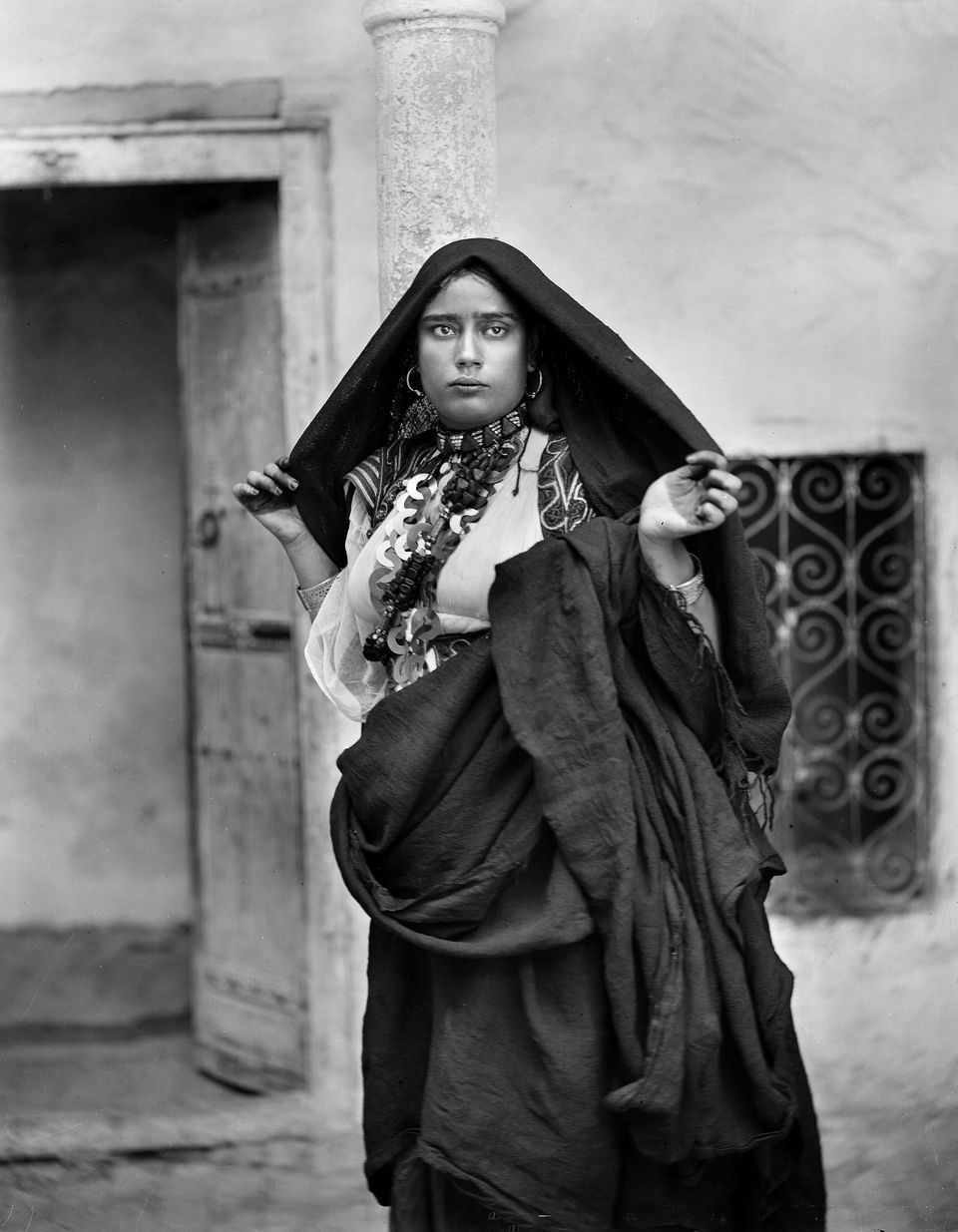
Photograph of woman wearing skhab necklace, c. 1890
Fast forward to the Middle Ages, a time that's infamous for poor personal hygiene. It's true that St. Francis of Assisi regarded dirtiness as a mark of holines, and some people took pride in their body odor. France's Louis XIII (1601 -1643) once boasted, "I take after my father, I smell of armpits." However, for most people, smelling good was as important then as it is now. And when the Crusaders returned from the East with a multitude of exotic scented items, the European populace welcomed them with open arms. Nutmeg, cinnamon, pepper, and cloves were some of the most important and valuable trade items in the world - at one point an ounce of nutmeg was worth an ounce of gold. And the richest people in Europe needed a way to conspicuously show off their new scented treasures.
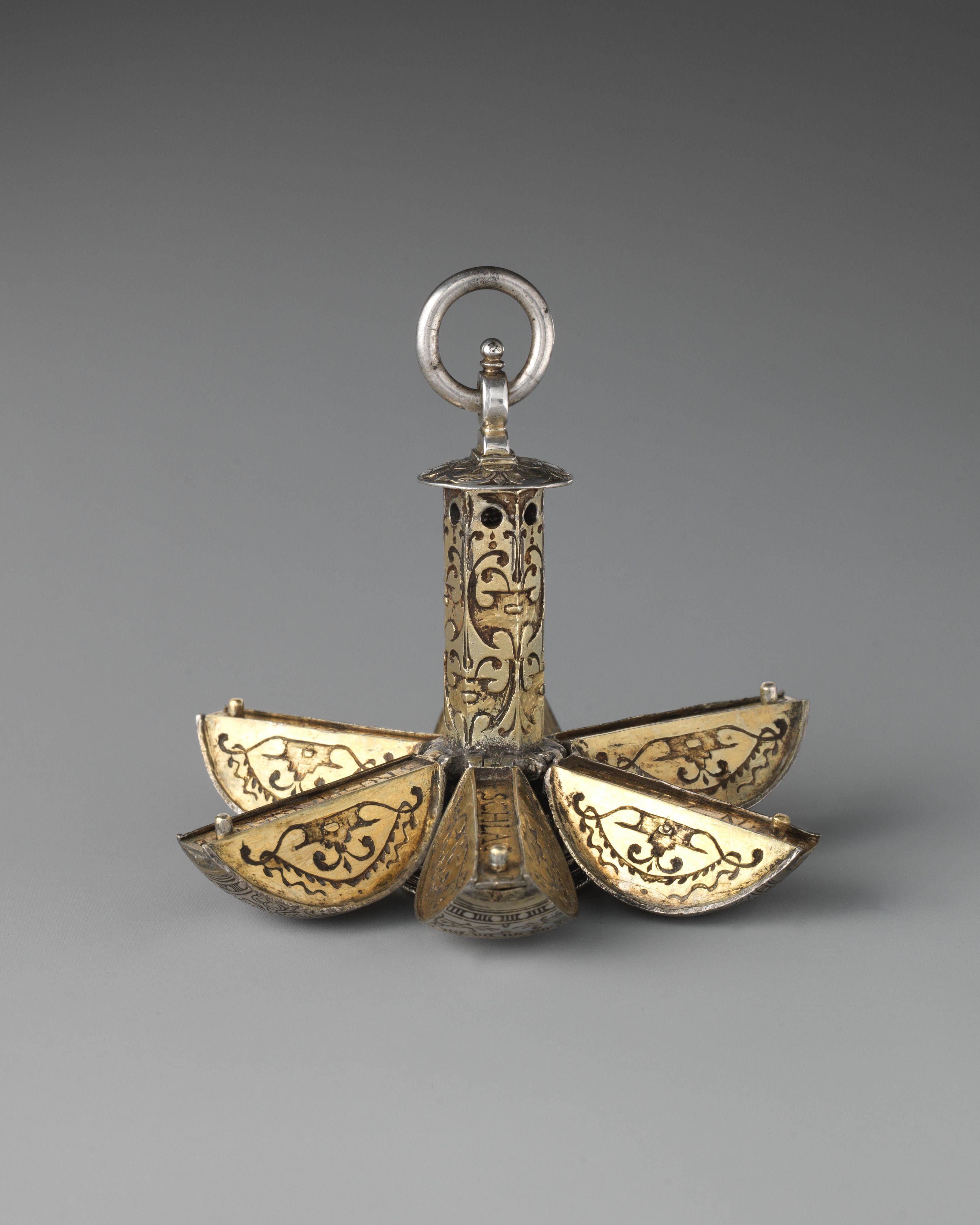
German pomander, 16th century, gilt silver. In the collection of the Metropolitan Museum of Art.
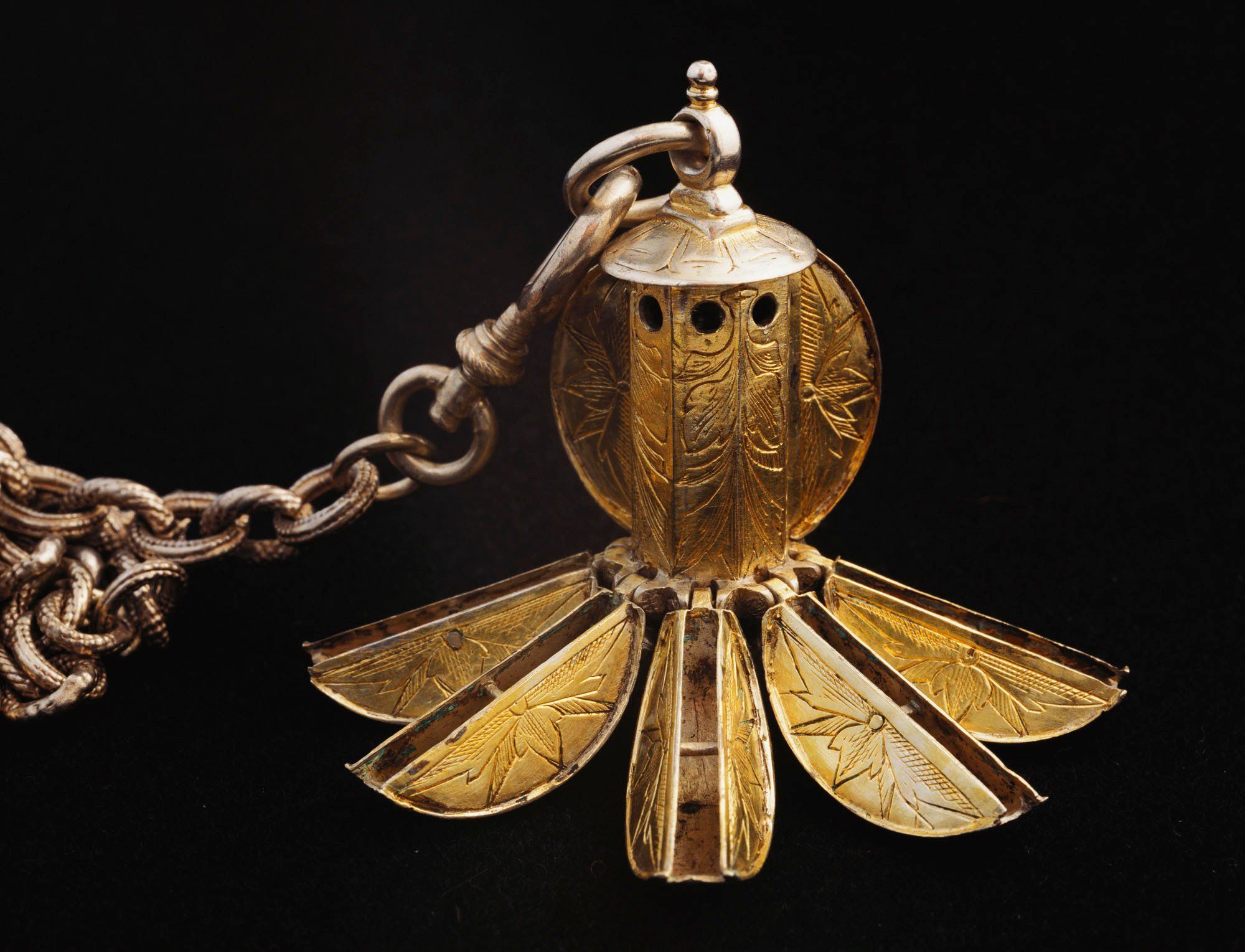
This pomander is said to have belonged to Mary, Queen of Scots (1542-87). In the Royal Collection Trust
Enter the pomander. In 1174, Emperor Frederick Barbarossa received a gift of "golden apples" filled with musk from King Baldwin of Jerusalem. The word is derived from the French pomme d'ambre: apple of ambergris. Ambergris, sometimes called the treasure of the sea or floating gold, is a solid, waxy substance that originates in the intestines of sperm whales. Found off the coasts of Japan, China and Greenland, ambergris acts as a scent stabilizer and adds a musky character to perfumes. People became obsessed with it.
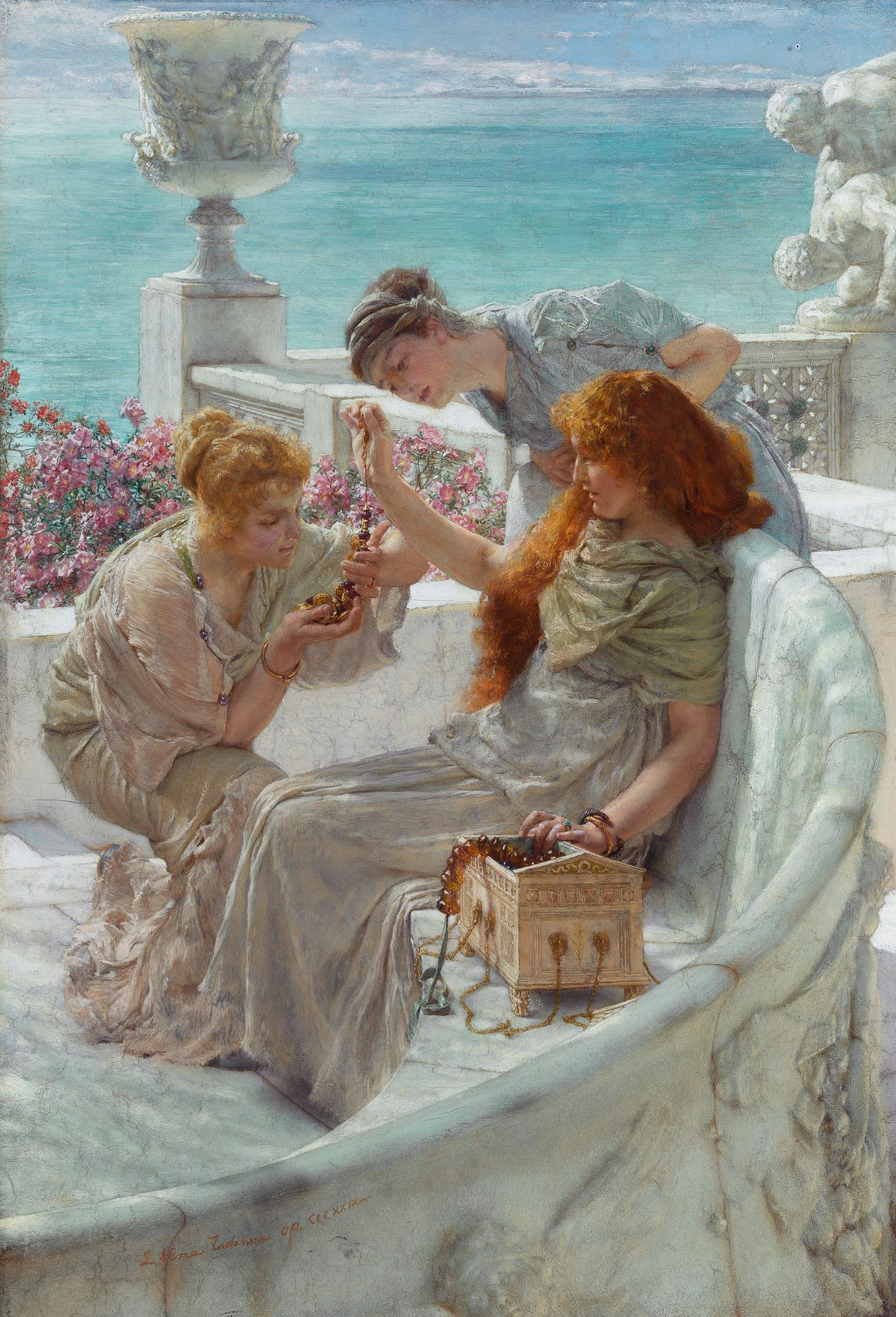
Fortune's Favorite by Lawrence Alma, 1895 (Showing off possibly amber or ambergris scented beads.)
Made from silver or gold, the apple or orange-shaped pomander was conceived to protect the perfume and to distribute it. The cages opened with a hinge and perfume - sometimes multiple types - were placed inside. Large pomanders were hung from chains worn around the waist, and small ones the size of thimbles could be worn on bracelets, necklaces or less often, rings.

Pomander of partially gilded silver and niello, made in Italy, 1300-1400. From the V&A Museum.
The pomander was seen as such a powerful amulet that even when empty, it was thought to guard both the wearer and those in close proximity from disease.
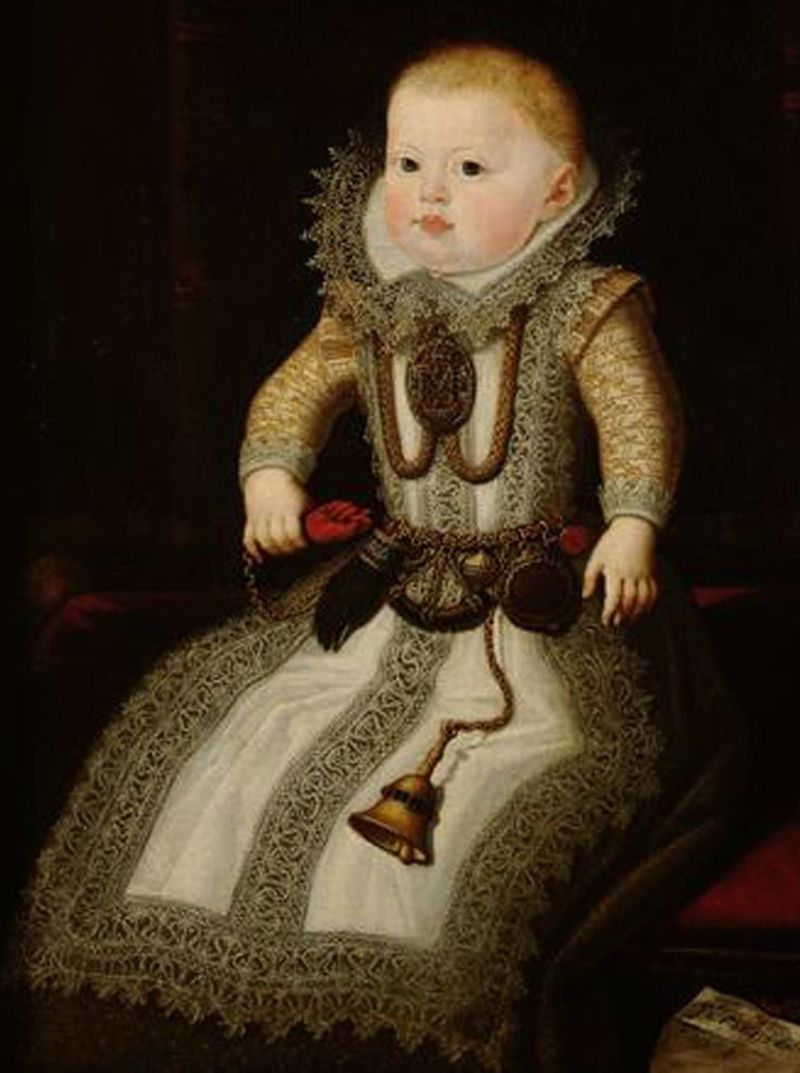
Portrait of the Infant Maria Anna, c. 1607, Juan Pantoja de la Cruz. She wears nine protective ornaments including a fica, badger's paw, bird's claw, apotropaic bell and pomander.
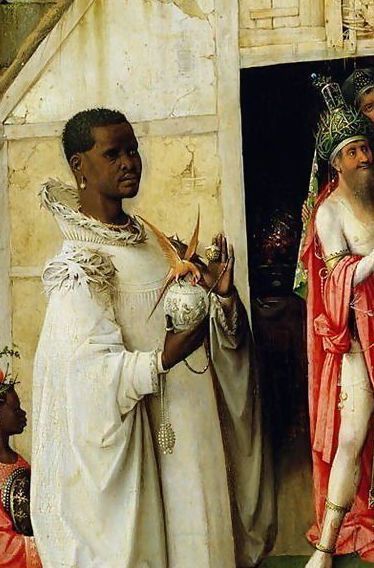
The Adoration of the Magi (detail of King Balthazar holding a pomander, from the central panel of the triptych) 1510. By Hieronymous Bosch.
Throughout the Middle Ages, the idea remained that disease spread through bad smells, stuffy air and rotting materials. The name for mosquito-born malaria actually means "bad air" in medieval Italian. Smelling good wasn't just a matter of vanity, it was a health concern. People perfumed themselves not so that they would necessarily smell pleasant to others, but so that they didn't have to smell their neighbors. Add in horse-filled streets and casual attitudes toward sewage; this meant bad smells were everywhere.
In plague-ridden Europe, it was believed that disease was transmitted through foul odors known as "miasma", a noxious form of poisoned air also known as "night air."
People figured if bad smells created illness, GOOD smells must repel it. Famously, plague doctors wore conical beak-like masks to protect themselves from contracting the disease. The beak could hold dried flowers (including roses and carnations), herbs (including lavender and peppermint), camphor, or a vinegar sponge, as well as juniper berry, ambergris, cloves, labdanum, myrrh, and storax. They believed the aromatic respirator prevented transmission of the bubonic plague, but more likely, it was their head-to-toe leather suits that created a barrier against disease-carrying fleas.
The first alcohol-based perfumes were developed in the late 14th century. This was a watershed moment for fragrance, making it easier to produce and thereby more accessible. That accessibility moved perfume out of the category of the sacred, and by the 18th century, into the realm of fashion. A tiny sponge would be drenched in an alcohol or vinegar-based fragrance and then housed in a portable smelling box known as a vinaigrette. The scents were sharp rather than sweet, and were used to stimulate and restore.
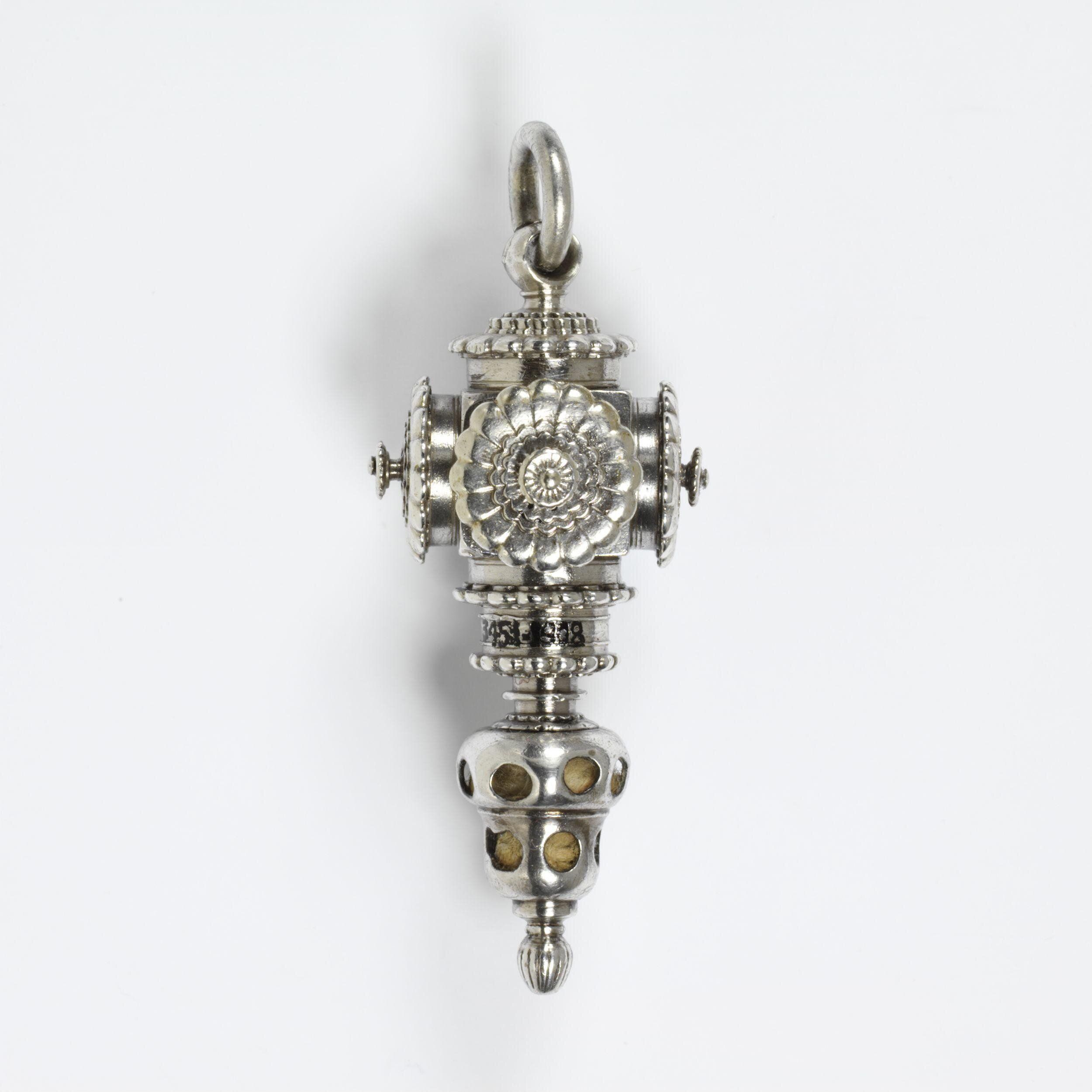
17th century scent case fitted with a squirt vinaigrette
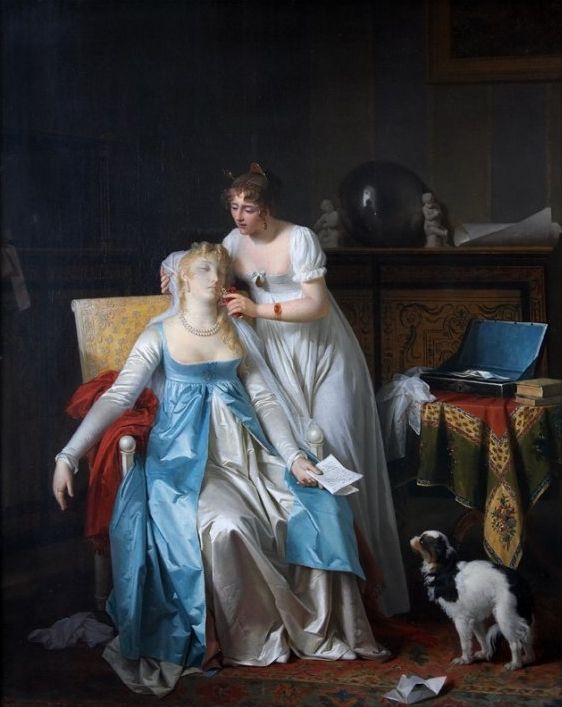
A fainting woman is revived with smelling salts or other sharp scent. "La Mauvaise Nouvelle," Gérard, Marguerite, 1804.
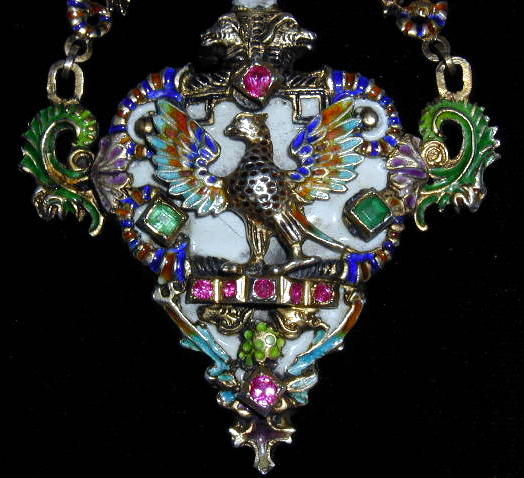

In the late 18th century, ladies wore their vinaigrettes on their chatelaines. Think of a cross between a charm bracelet and Swiss Army knife, but worn on the belt. The concept derived from the keys that medieval castle-keepers worn on their belts. Since pockets and handbags weren't yet en vogue, this was the way to keep the essentials close at hand. In addition to the vinaigrette, a lady might wear scissors, thimbles, tape measurers and notepads on her belt. By the end of the 19th century, a lady's chatelaine frequently held a small flask of ammonia-based smelling salts (for the fainting spells brought on by all those tight corsets)
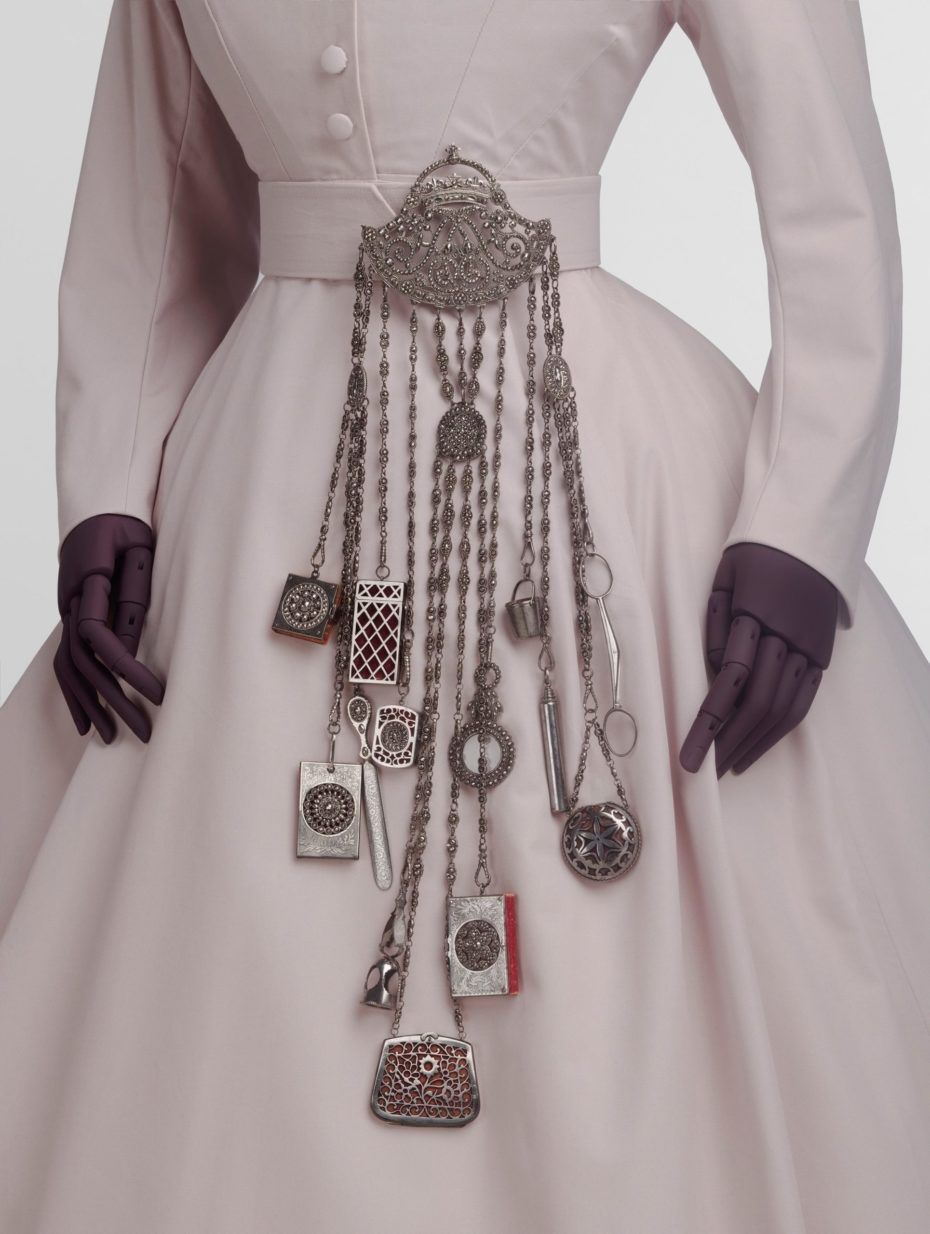
Chatelaine, 1863 – 1885, Victoria and Albert Museum, London.

Downtown Abbey's Mrs. Hughes wearing a chatelaine
In the 20th century smelling salts were out and liquid perfumes were in. But aromatic jewelry isn't going anywhere. From Cartier to Tiffany's, every major jewelry house has developed and marketed some aromatic jewelry. Vintage perfume jewelry - including Elsa Peretti's gorgeous sculptural vessels she designed for Tiffany & Co. - remains highly collectible.
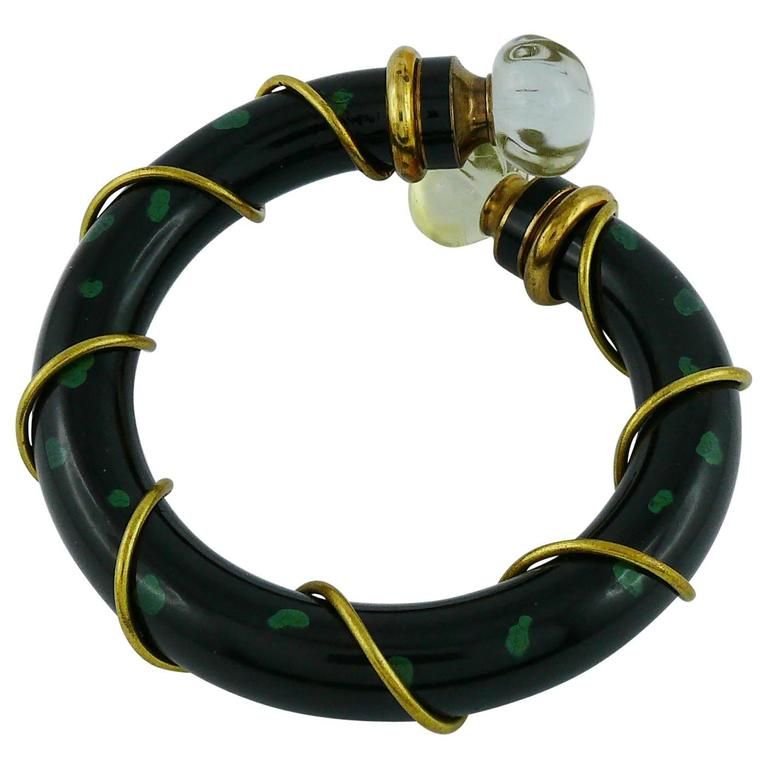
Christian Dior. Poison wrist cuff flacon, 1986.
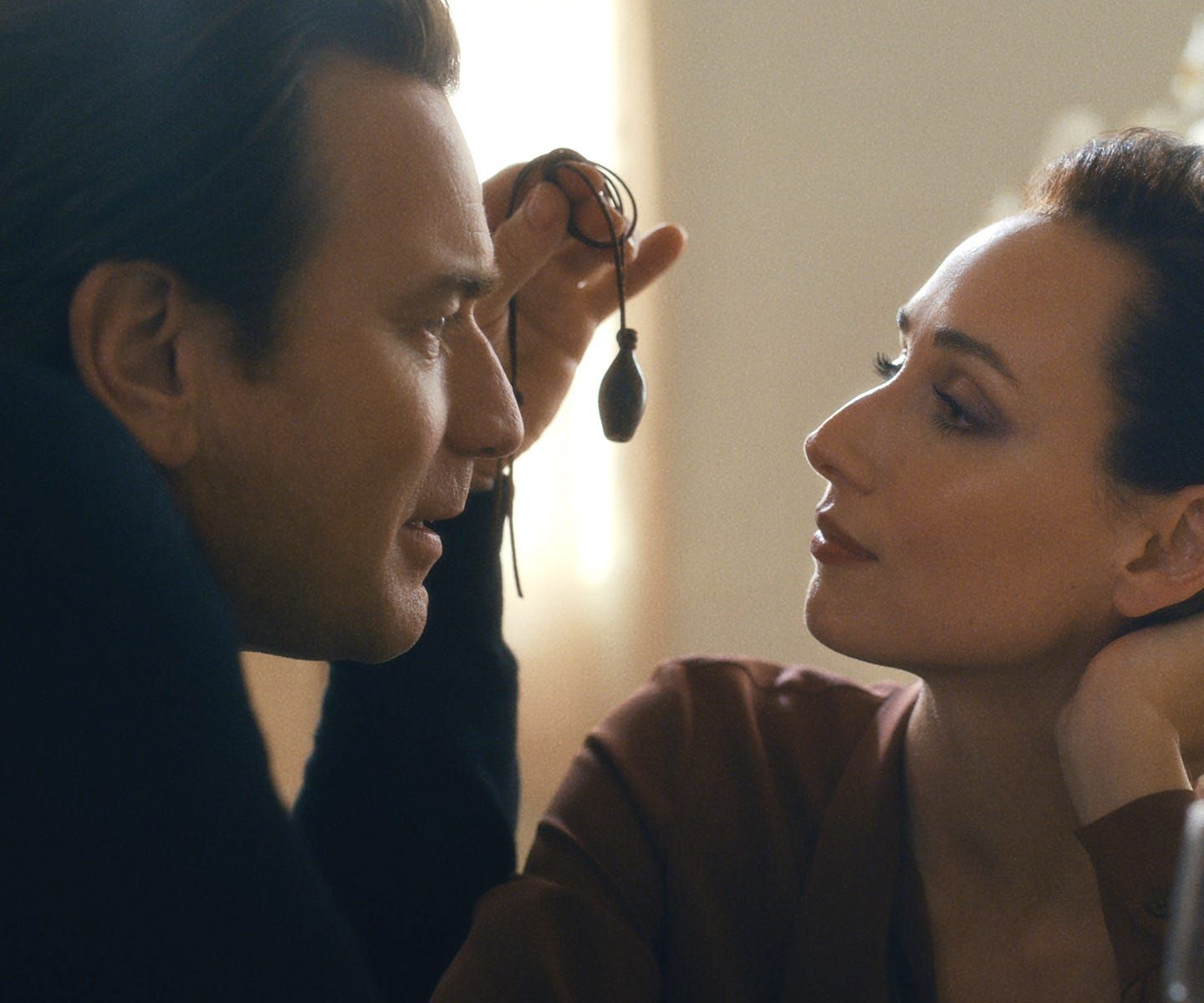
Halston (Ewan McGregor) and Elsa Peretti (Rebecca Dayan) discussing their perfume necklace collaboration in Netflix's ‘Becoming Halston’.

